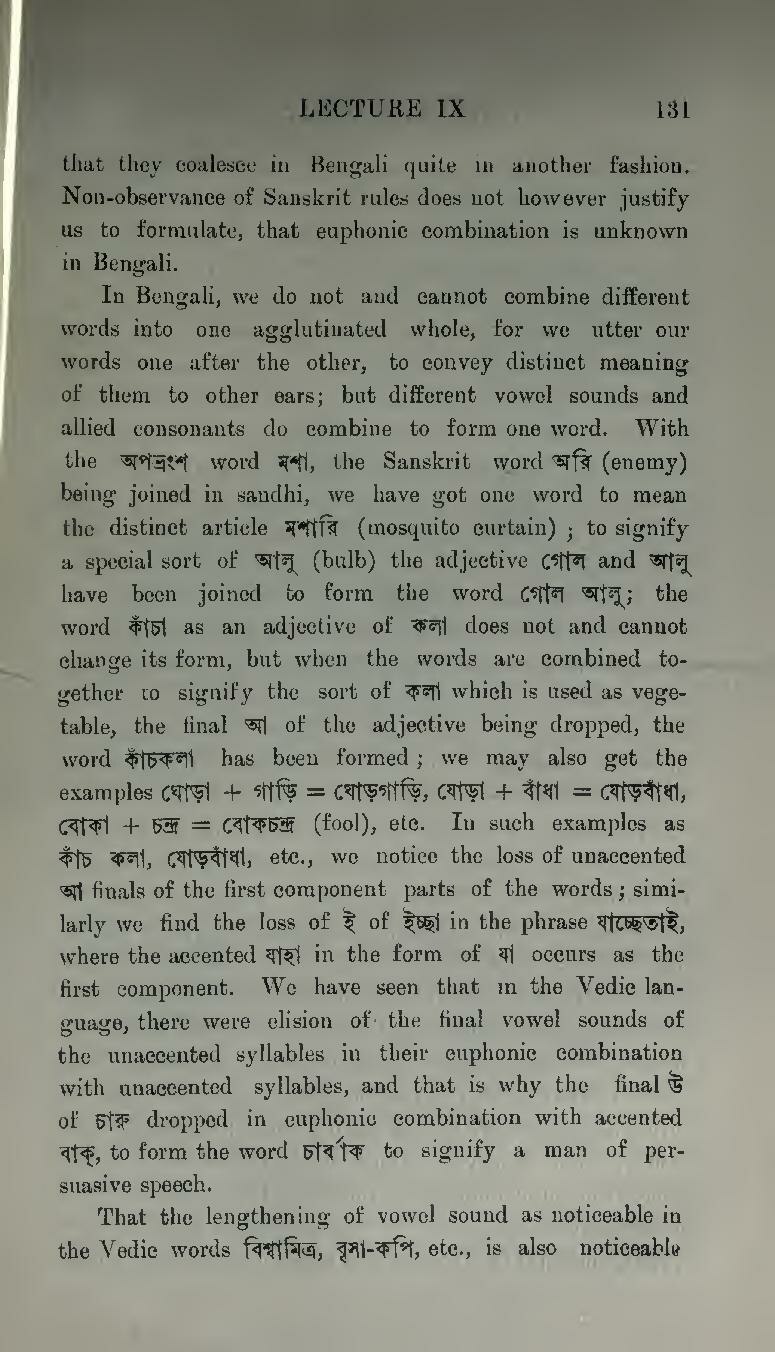that they coalesce in Bengali quite in another fashion. Non-observance of Sanskrit rules does not however justify us to formulate, that euphonic combination is unknown in Bengali.
In Bengali, we do not and cannot combine different words into one agglutinated whole, for we utter our words one after the other, to convey distinct meaning of them to other ears; but different vowel sounds and allied consonants do combine to form one word. With the অপভ্রংশ word মশা, the Sanskrit word অরি (enemy) being joined in sandhi, we have got one word to mean the distinct article মশারি (mosquito curtain); to signify a special sort of আলু (bulb) the adjective গোল and আলু have been joined to form the word গোল আলু; the word কাঁচা as an adjective of কলা does not and cannot change its form, but when the words are combined together to signify the sort of কলা which is used as vegetable, the final আ of the adjective being dropped, the word কাঁচকলা has been formed; we may also get the examples ঘোড়া + গাড়ি = ঘোড়গাড়ি, যোড়া + বাঁধা = যোড়বাঁধা, বোকা + চন্দ্র = বোকচন্দ্র (fool), etc. In such examples as কাঁচ কলা, যোড়বাঁধা, etc., we notice the loss of unaccented আ finals of the first component parts of the words; similarly we find the loss of ই of ইচ্ছা in the phrase যাচ্ছেতাই, where the accented যাহা in the form of যা occurs as the first component. We have seen that in the Vedic language, there were elision of the final vowel sounds of the unaccented syllables in their euphonic combination with unaccented syllables, and that is why the final উ of চারু dropped in euphonic combination with accented বাক্, to form the word চার্বাক to signify a man of persuasive speech.
That the lengthening of vowel sound as noticeable in the Vedic words বিশ্বামিত্র, বৃসা-কপি, etc., is also noticeable
